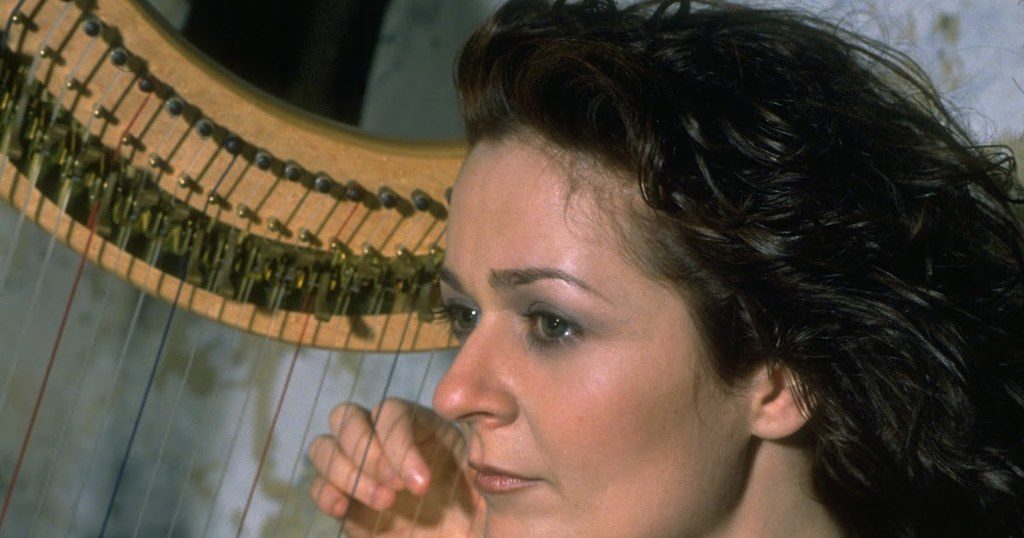Harp – Technique and No Limits on Your Expression (Musicians)(Psychology)(Pain)(Strain)(Injuries)(Posture)(Alexander Technique)(Albuquerque)
This ebook, An Alexander Technique Approach to Harp Technique, is published on this website in a PDF format. It is very detailed and practical, and it will give you the physical tools you need to take the limits off of your ability to create the accurate harp technique you want without sacrificing your body.
This ebook is also for sale on all AMAZON websites in a KINDLE format.
Located in Albuquerque, New Mexico, U.S.A. (MOVEMENT THERAPY)
If your technique is good enough for you play a harp piece with ease, what stands between you and playing the piece magnificently expressively? Fear of breaking the rules stands between you and unfettered expressive playing.
Fear of what rules? Fear of playing without a net. What do I mean? I mean fear of playing without any set rules, of playing without all of your harp teachers sitting on your shoulders telling you what to do where.
If as a harpist you say to yourself, “I’m throwing out everything I was ever told I had to do by my harp teachers who set strict limits on what is musical playing”, then what are you left with? YOU ARE LEFT WITH THE FREEDOM TO EXPRESS YOURSELF ON THE HARP WITHOUT ANY PHYSICAL, PSYCHOLOGICAL, OR SPIRITUAL LIMITS.
Why do we see many harp performers rarely doing this? What you do see among a lot of wonderful harp players are those who play by all of the limiting rules they’ve been taught, but they do it so incredibly well with extraordinary technique!
Now, I want to clarify something here. I’m not talking about playing a piece so eccentrically that it totally departs bizarrely from what the composer intended, or so eccentrically that the listeners can’t connect to the performance.
I’m talking about playing with such fearless unguarded emotion being expressed through the notes, that the harpist and the audience know they’re in the presence of a performance where the performer is communicating everything he or she is feeling through the notes, forte, piano, crescendo, decrescendo, color changes, rubato. All of the above is incorporated at their most subtle and to their greatest expressive extreme.
For the above to happen, the harpist has to know, to be shown, that it is nearly impossible to be too expressive. When I ask a harp player to play a piece with too much expression, what I typically get is a performance with just the right amount of expressiveness in it.
Here are two other non-musical examples of expressiveness, of freedom, where the person asked to exaggerate creates an incredibly more interesting activity: walking and public speaking. When I ask a public speaker to wildly experiment with speaking faster/slower and louder/softer, it is amazing how much more interesting the speech is.
When I ask someone I’m teaching how to walk with the principles of the Alexander Technique, to swing their arms too much, it is usually for the first time in that person’s life that he or she is truly swinging their arms enough. To the walker, he or she may feel like they’re doing something from the Monty Python’s Ministry of Funny Walks, but they truly look free with their walking arms swinging easily
So, why do a great many harpists play with what I call flat expressiveness? (I consider playing everything too loud as flat expressive playing.)
THEY DO SO BECAUSE THEY ARE PLAYING IT SAFE LITERALLY AND FIGURATIVELY. FLAT EXPRESSIVE PLAYING IS NEITHER RIGHT NOR WRONG, AND WHEN TIED TO GREAT TECHNIQUE, THE LISTENER IS BLINDED BY THE FACT THAT THE PERFORMER WASN’T ALL THAT INTERESTING – WAS NOT INSPIRING!
I want to define GREAT TECHNIQUE here in the Alexander Technique sense. Great technique is the ability to play the greatest literature of the harp with ease without harming your body over your years of playing. Traditionally great technique is defined as being able to play the great harp literature with ease and accuracy with minimal concern for the wear and tear you’re causing your body. THIS WEAR AND TEAR IS UNNECESSARY WHEN A WHOLE BODY HARP TECHNIQUE PLACES CARE OF YOU FIRST.
I you usually play it safe, why? What is the payoff? Let me flip this over. What is the great danger in playing massively expressively? I’m really exaggerating in this article, (or maybe not. Ha!ha!)
This is a very good place in this article for me to be an Alexander Teacher. Playing “massively expressively” is about expressing yourself musically, BUT NOT ABOUT SHOWING THE AUDIENCE HOW TENSE YOU CAN PHYSICALLY BE TO CONVEY MUSICAL CONTRASTS AND FEELINGS.
DO NOT CONFUSE INTENSITY IN PERFORMANCE WITH INTENSITY IN PERFORMANCE. Intensity in performance is pure contrasting expression heard, when you’re being listened to by an audience with its eyes closed. Tension in a performance is when the audience closes its eyes, and realizes you’re just not all that interesting of a performer.
If you play the right notes in a piece with flat expressiveness then you are neither right nor wrong. This means you’re not wrong. NEVER UNDERESTIMATE HOW POWERFULLY THE TRAINING HARPISTS GO THROUGH THAT TEACHES THEM TO ATTEMPT TO ALWAYS BE RIGHT IS!
NOT BEING WRONG WHEN YOU PERFORM IS NOT BEING RIGHT. It is time to take the lid off of your expressiveness, and show yourself and the audience who you are when you perform on the harp.
